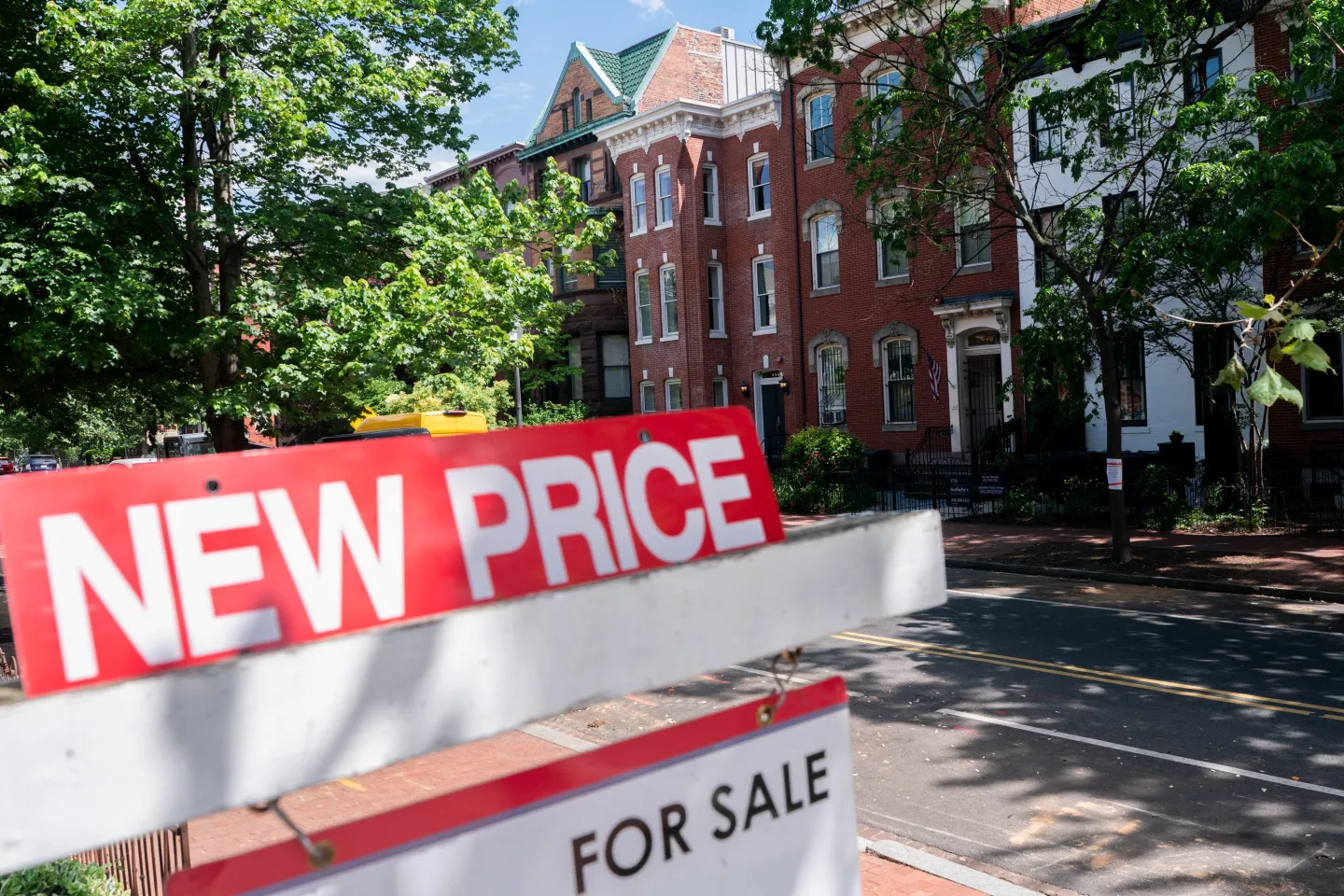The Housing Mirage: Why More Than Half of U.S. Homes Lost Value This Year—And Some Cities Saw Nearly Universal Declines

For years, Americans have been told that real estate is the safest and most reliable store of wealth—an asset that grows steadily, insulated from the volatility of the stock market and the uncertainty of global events. But the past year has exposed a harsh new reality: more than half of all homes in the United States have declined in value, and in several major cities, the downturn has been nearly universal. Once-booming housing markets are now grappling with widespread losses, leaving homeowners shocked, buyers confused, and economists wrestling with the implications of a cooling market in a still inflationary economy.
The decline represents one of the sharpest reversals in sentiment since the aftermath of the 2008 financial crisis. Just a short time ago, bidding wars, above-asking offers, and unprecedented price surges defined American real estate. Homeownership was not merely a financial milestone but a wealth machine. That narrative has now been disrupted by a combination of high interest rates, deteriorating affordability, and weakening demand that has begun to deflate prices across broad swaths of the country.
The most striking element of the shift is its breadth. Declining values are not isolated to a handful of overheated coastal metros; they are occurring in suburbs, mid-sized cities, exurbs, and once-invincible Sun Belt powerhouses. Markets that were held up as pandemic-era success stories—places that saw an influx of remote workers and speculative investors—are now confronting the consequences of overvaluation. In some cities, recent data shows that nearly every home has lost value, an almost unprecedented statistic in modern American housing history.
The root cause is familiar yet newly potent. Mortgage rates have climbed to heights not seen in decades, with borrowers facing interest costs that more than double what homebuyers paid just three years ago. The effect on affordability has been devastating. A typical household now finds itself priced out not because of soaring home prices, but because of the cost of borrowing. Sellers, in turn, face a shrinking pool of eligible buyers and a deep reluctance among homeowners to give up low-rate mortgages locked in during the pandemic. This stalemate has frozen transactions and forced price adjustments downward, particularly in markets that soared too high too fast.
Some of the hardest-hit cities share similar profiles: rapid pandemic-era growth, aggressive investor activity, and a high ratio of pricing relative to local incomes. In parts of Nevada, Arizona, Utah, Texas, Idaho, and Florida, values inflated to levels that far exceeded historical norms. When mortgage rates rose, these markets became uniquely vulnerable. With fewer buyers able to qualify, sellers were forced to reevaluate their expectations. The result has been a widespread recalibration—one that is painful for recent buyers who now find themselves underwater on their mortgages.
The situation is not confined to the Sun Belt. Cities in the Midwest and Northeast, which typically avoid the extremes of boom-and-bust cycles, have also experienced declines. In some regions, rising insurance premiums, climate risks, and demographic stagnation have added stress to an already fragile market. Aging housing stock and outmigration have further weighed on values, leaving many communities facing downward pressure despite no previous signs of overheating.
What makes this downturn particularly challenging is the mismatch between falling home values and still-elevated home prices relative to incomes. In many markets, prices remain significantly higher than pre-pandemic levels, but the rate of price growth has reversed sharply. This creates a paradox: homes are simultaneously too expensive for many buyers to afford and losing value for the people who already own them. The traditional mechanisms of the housing market—supply, demand, and affordability—have fallen out of sync, leaving an economy in which neither buyers nor sellers are satisfied.
The broader economic implications are significant. Housing wealth plays a central role in consumer confidence, spending, and long-term financial stability. When homeowners see their properties lose value, even modestly, they tend to tighten spending, reduce investment, and reconsider major financial decisions. For a country where housing represents the largest source of household wealth, a widespread decline in home values is a warning sign that extends far beyond real estate.
The psychological dimension is equally important. For many Americans, homeownership is intertwined with identity, opportunity, and upward mobility. The idea that a home could lose value—especially after years of being told prices only move upward—challenges deeply ingrained beliefs about the reliability of the American Dream. Younger buyers, who often stretched themselves financially to purchase during the pandemic-era frenzy, now face the anxiety of owning assets that may take years to recover. Older homeowners, planning for retirement, must reassess the role of home equity in their long-term financial plans.
Yet the downturn also presents opportunities. For buyers who have been priced out for years, declining values offer the possibility of re-entering markets that once felt unattainable. Inventory is slowly increasing, sellers are becoming more flexible, and price cuts are becoming more common. In markets where the correction is most severe, first-time buyers and long-term investors may find unprecedented entry points—though still constrained by the weight of high borrowing costs.
The question now is whether the decline represents a temporary correction or the beginning of a more prolonged adjustment. Much will depend on the path of interest rates, the resilience of the labor market, and whether consumer confidence stabilizes. If mortgage rates fall substantially in the coming year, pent-up demand could revive prices. If not, the country may be entering a period in which real estate behaves more like a traditional asset—subject to cycles, volatility, and recalibrations—rather than a one-way ticket to financial security.
The current moment is a reminder that housing, like all markets, is shaped by supply, demand, psychology, and policy. For more than a decade, conditions conspired to create an environment in which home values surged relentlessly. That era has ended, and the new one demands a more sober understanding of risk, affordability, and the true cost of sustained price growth.
As more than half of American homes lose value—and as certain cities confront declines touching nearly every address—the nation faces a new reality: real estate is not immune to economic cycles. For homeowners, policymakers, and buyers alike, the challenge ahead is to adjust expectations, confront imbalances, and prepare for a market that is once again being reshaped by forces beyond anyone’s control.















